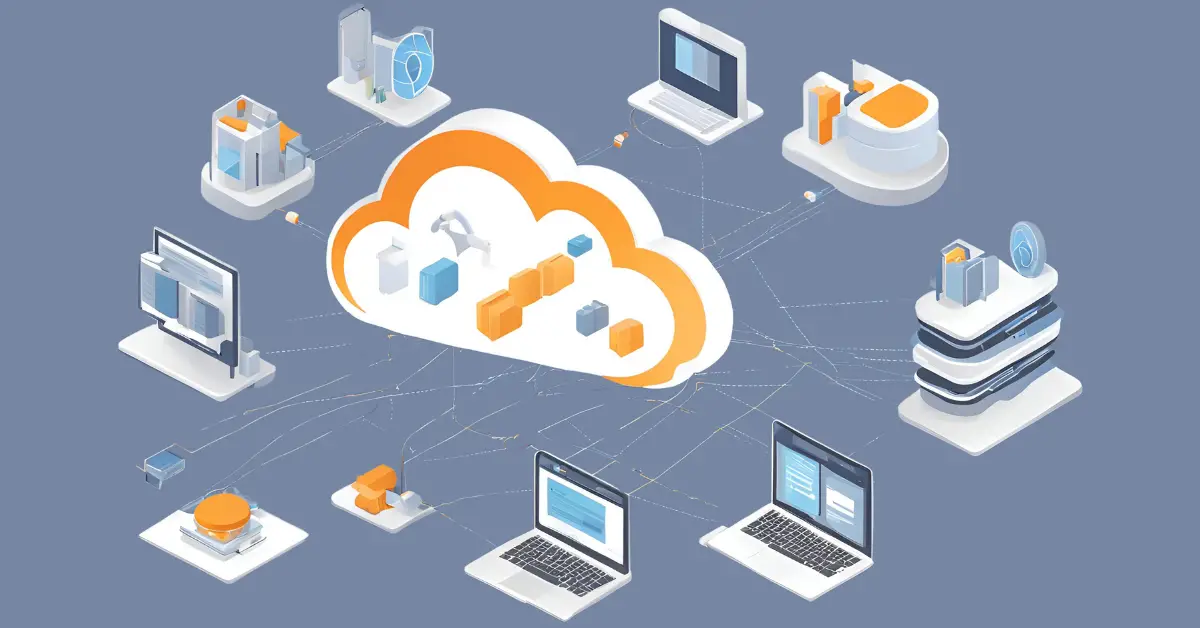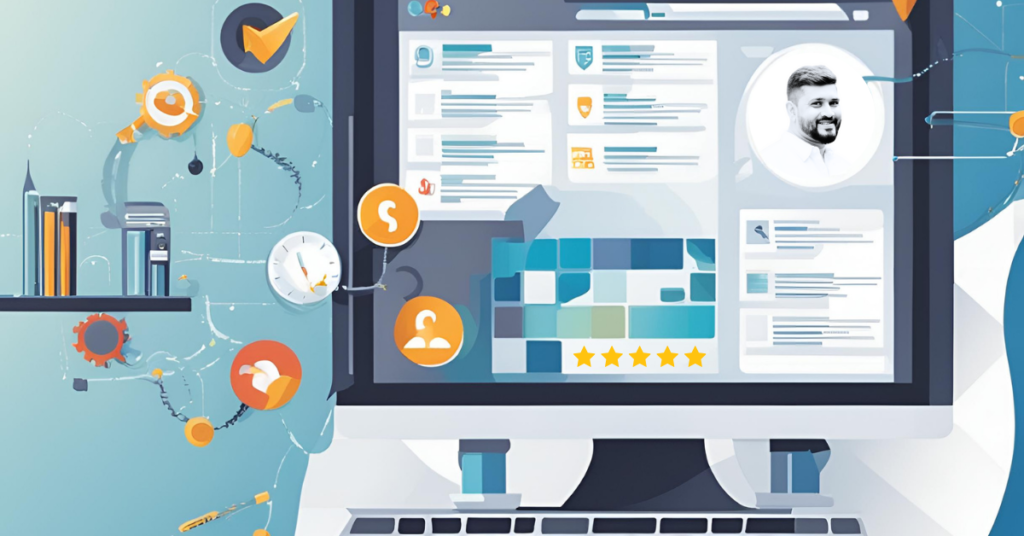
System Design: Building Castles in the Cloud (Without the Dragons)
System design is like constructing a mighty castle. You need strong walls (security), well-planned roads (communication protocols), and secret passageways (efficient data flow) to ensure everything runs smoothly. But instead of dragons and knights, we deal with load balancers, databases, and caching mechanisms.
Let’s explore system design. We will break down its core concepts. We will also explain why it’s crucial to get it right. This is especially important if you’re into testing and automation.
What is System Design?
At its core, system design is the process of defining the architecture, components, and data flow for a software solution. Whether you’re designing a small app or a global-scale platform like Netflix, the principles remain the same—efficiency, scalability, and reliability.
Think of system design as creating a blueprint for how your software will operate in the real world. It is similar to how an architect plans out a building. An architect considers the layout, materials, and potential risks (like bad weather or earthquakes). Similarly, a software engineer considers factors like high traffic, data storage, and system failures.
Key Components of System Design
When designing a system, several essential components come into play. Here’s a breakdown of the most important ones:
| Component | What It Is | Example |
|---|---|---|
| Client/Server | The interaction between users (clients) and the system (server) | Web browsers requesting a webpage |
| Databases | Where all your data is stored | MySQL, PostgreSQL, MongoDB |
| Load Balancers | Distribute traffic across multiple servers | Nginx, HAProxy |
| Cache | Temporary data storage for faster access | Redis, Memcached |
| API Gateways | Manage API traffic and requests | AWS API Gateway, Kong |
| Queues | Handle tasks asynchronously | Kafka, RabbitMQ |
| Scalability Mechanisms | Allow systems to grow with demand | Horizontal scaling with cloud services |
Each component plays a role in ensuring your system remains functional, even under heavy load or during unexpected events.
High-Level System Design Concepts
Here are some key system design concepts every software tester and developer should know:
Scalability
Scalability refers to a system’s ability to handle increased load by adding more resources. There are two types:
| Type | Description | Example |
|---|---|---|
| Vertical Scaling | Adding more power (CPU, RAM) to an existing server | Upgrading your local server machine |
| Horizontal Scaling | Adding more servers to distribute the load | Adding more web servers to a load balancer |
Analogy:
Imagine a restaurant. Vertical scaling is like upgrading the kitchen with faster ovens. Horizontal scaling is like hiring more chefs to work in multiple kitchens. Both strategies can help you serve more customers!
2. Load Balancing
Load balancers distribute incoming traffic across multiple servers to ensure no single server gets overwhelmed. This ensures high availability and fault tolerance.
Picture This:
Think of a load balancer as a receptionist directing customers to different checkout counters at a supermarket. If one counter gets busy, the receptionist sends new customers to a different counter, keeping things running smoothly.
3. Caching
Caching involves storing frequently accessed data in a temporary location so it can be retrieved faster. This reduces the load on databases and speeds up response times.
Example:
Imagine if every time you wanted to access your favorite playlist, you had to search for every song individually. Caching is like saving that playlist so you can access it with one click instead.
Database Sharding
Sharding is the process of splitting large databases into smaller, more manageable pieces, or “shards.” This helps with scalability and improves performance.
Analogy:
Think of sharding like splitting a giant pizza into slices. Instead of handling the whole pizza at once, you can distribute slices to different people. This makes it easier and faster to eat.
Fault Tolerance and Redundancy
Fault tolerance ensures that your system remains operational even when components fail. Redundancy means having backups for critical components, such as servers or databases.
Picture This:
It’s like having a spare tire in your car. If one tire blows, you can swap it out and keep going without being stranded.
Why is System Design Important?
So, why should testers and developers care about system design? Here’s why it’s a game-changer:
- Scalability: Proper system design ensures your software can handle increasing traffic and demand.
- Reliability: A well-designed system minimizes downtime and handles failures gracefully.
- Performance: Optimized system design ensures fast response times and smooth user experiences.
- Testability: System design affects how easy it is to test and automate key components, making the testing process smoother.
Common System Design Patterns for Testers
As a tester, understanding common system design patterns can help you test more efficiently. Here are a few patterns you should know:
| Pattern | Description | How It Helps in Testing |
|---|---|---|
| Microservices | Breaking down applications into small, independent services | Test services individually for more precise results |
| Monolithic | A single, unified application | Easier to set up but harder to scale and test independently |
| Event-Driven | Systems where actions trigger events | Test for event consistency and timing |
| Service-Oriented Architecture (SOA) | Services communicate over a network | Focus on integration testing for interactions between services |
Each design pattern offers its own advantages. The choice often depends on the specific needs of the application you’re developing or testing.
Practical Example: Designing a System for a Simple E-Commerce App
Let’s imagine you’re designing a system for a simple e-commerce platform. Here’s how you might lay out the design:
- Clients: Users on web browsers or mobile apps interact with the system.
- API Gateway: Handles requests from clients and forwards them to the correct service.
- Load Balancer: Ensures that traffic is evenly distributed between web servers.
- Web Servers: Handle front-end requests, such as showing products or processing orders.
- Databases: Store user information, product catalogs, and order histories.
- Cache: Stores frequently accessed data like product details to speed up responses.
- Message Queue: Manages asynchronous tasks, such as sending order confirmation emails.
- Analytics and Monitoring: Tracks user activity and system health.
Here’s what it looks like:
| Component | Function |
|---|---|
| Client | Interacts with the platform (UI) |
| API Gateway | Directs traffic to appropriate services |
| Web Servers | Serve front-end logic and UI components |
| Database | Store transactional and user data |
| Cache | Improve response times for repeated queries |
| Message Queue | Handle background processes (e.g., emails) |
| Load Balancer | Distribute traffic among servers |
Testing System Design: What Should You Look For?
Testing system design goes beyond functional testing. Here are a few things to focus on:
- Scalability Testing: Can the system handle increased traffic or data without breaking?
- Load Testing: Does the system maintain performance under stress?
- Failover Testing: What happens when one part of the system fails? Does it recover?
- Security Testing: Is sensitive data protected, and does the system prevent unauthorized access?
By incorporating these testing strategies, you ensure your system design isn’t just robust but also reliable under various conditions.
Conclusion: System Design—The Backbone of Your Application
System design is more than just a bunch of boxes and arrows on a diagram. It’s about making sure your application can handle real-world challenges, from a sudden traffic surge to unexpected hardware failures. As software testers and developers, understanding system design helps you build applications that are scalable, reliable, and easy to test.
Remember, much like building a castle, a strong foundation is key to success!
FAQs
Q1: What is the main goal of system design?
A: The goal is to create a system architecture that is scalable, reliable, and efficient, capable of handling real-world demands.
Q2: Why is caching important in system design?
A: Caching helps store frequently accessed data temporarily, improving system performance and reducing load on databases.
Q3: What is the difference between vertical and horizontal scaling?
A: Vertical scaling involves upgrading existing servers, while horizontal scaling adds more servers to distribute the load.
Q4: How does load balancing work in a system?
A: Load balancers distribute incoming traffic across multiple servers to prevent any single server from being overwhelmed.
Q5: What role does testing play in system design?
A: Testing ensures that the system is scalable, reliable, and secure. It also ensures that the system performs well under stress or failure conditions.
![]()
Subscribe to QABash Weekly 
Dominate – Stay Ahead of 99% Testers!

